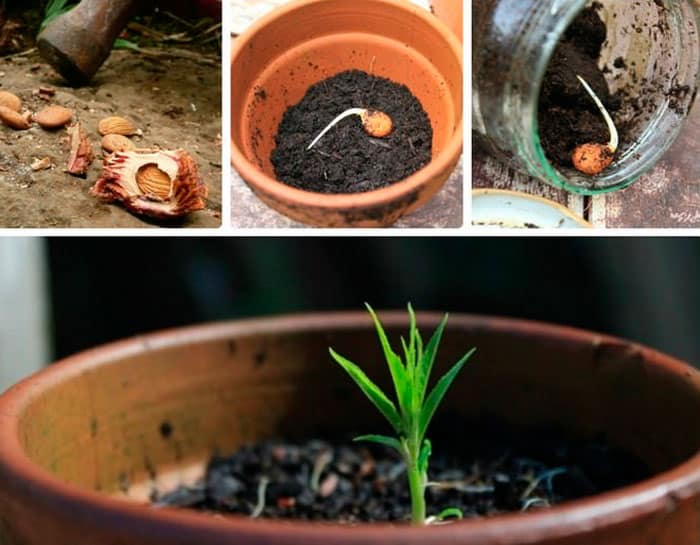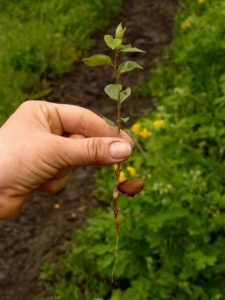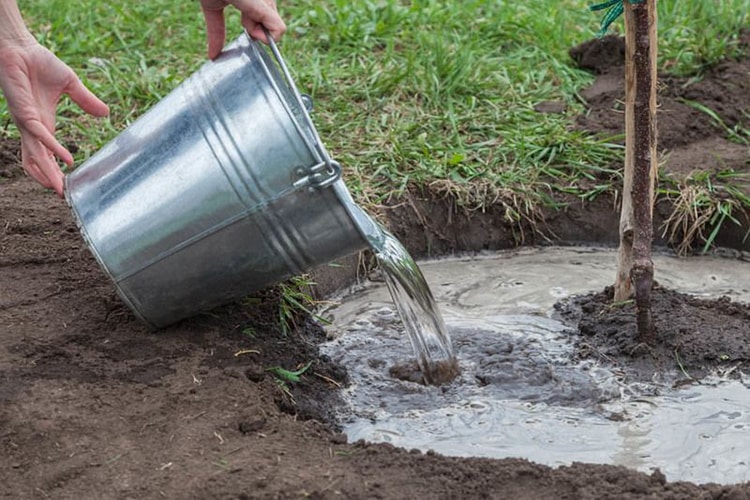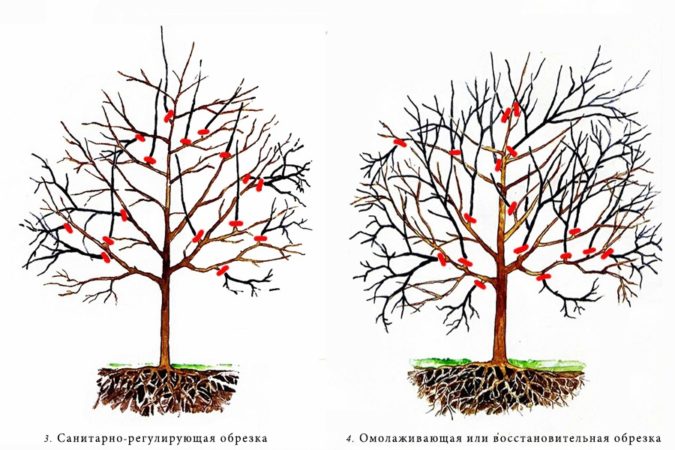How to grow apricots from seeds at home and in the country
Fresh and aromatic apricots are welcome in any home - jams and preserves, juices and compotes are prepared from the juicy fruits. In order not to look for fruits in stores, Russian summer residents grow them at home or in their dachas. The yield of such an apricot depends not only on compliance with the rules of care, but also on proper planting. Especially if not seedlings, but seeds are used as planting material. We’ll look at how to grow apricots from seeds at home and how to care for them in this article.
Is it possible to grow an apricot from a seed?
The classic way to grow apricots is by planting seedlings. But it is not always possible to buy them and plant them on the site on time. In addition, planting seedlings does not guarantee a rich harvest; sometimes such trees bear little fruit or do not bear fruit at all. Therefore, many gardeners prefer to grow apricots from seeds.
This method is suitable both for growing a tree at home and in a garden or summer cottage. The main thing is to follow the recommendations for planting and further care.

Whether or not an apricot from the pit will bear fruit depends on many factors. This is compliance with agrotechnical rules, climate and growing region, varietal characteristics. It is important to know how apricots grow and what conditions they need.
Experienced gardeners claim that seed trees adapt faster and are unpretentious.
Attention! The seeds of local apricots are used for planting.It is not recommended to choose southern varieties for growing in the north - the trees will freeze and weaken. Gardeners prepare 5-10 seeds in advance, because not all of them germinate.
How to grow an apricot from a seed
You can grow apricots from seeds both at home and in your summer cottage.
The landing procedures are similar, but also have differences.
At home
To get tasty and beautiful fruits, apricot pits are sprouted at home. To do this, suitable seeds are selected and stratification is carried out.
At home, apricots are planted in summer or autumn, when there is a large selection of seeds of different varieties.
Preparing the pit
Large seeds are selected for planting. Gardeners recommend tasting them. Good bones should be sweetish, without bitterness. They are soaked in water and the surfaces are removed. They are empty and will never produce a harvest. If the seeds are dry, they are soaked in water for 3 days. It is better to use soft water without chlorine - melt or rain.
Then the seeds are sprinkled with washed river sand, moistened with water, placed in a tight bag and left in the refrigerator or cellar for 3 months - after this time the roots hatch. If during stratification some specimens turn black or become moldy, they are removed.
Selecting a container and preparing the soil
Apricot has a taproot system, so deep roots are chosen for planting. pots. These can be special garden containers with a volume of at least 1 liter or simple plastic glasses with drainage holes. The latter are necessary to drain excess water, otherwise the apricot will rot. Also, along with the pot, trays or saucers are prepared where the water will drain.
Home apricot is unpretentious when choosing soil, so gardeners prepare ready-made soil or soil from the garden. The latter option is preferable - the seedling will receive more nutrients from such soil.
For preparation you need 5 liters of garden soil, 0.5 liters of vermicompost, 1 tbsp. vermiculite (artificial drainage component). The planting soil should be free of insects, branches, leaves and other plant debris.
Attention! Before planting, the soil is disinfected - steamed. A bucket of water is placed on the stove, and a grate with soil is placed on top, having previously wrapped it in a piece of cloth. Leave for 1.5 hours and cool. Steaming cleans the soil of organic residues and insect larvae.
Step-by-step instruction

The planting process begins with a drainage layer - vermiculite or fine expanded clay is placed at the bottom of the pot.
What to do next:
- Soil is poured into the pot, leaving 1-2 cm from the edge, and lightly compacted.
- One seed at a time is placed on the surface, spine down. There is no need to deepen it, just sprinkle it lightly with soil.
- Water the pit and cover the container with cling film.
- The pot is put in a warm place.
- Inspect the plant daily - ventilate and remove condensation from the film.
- After the first shoots appear, move the pot to a bright windowsill.
In the country
At the dacha, apricots are planted in mid-autumn or spring. If you do this in the summer or early September, the bones will be taken away by rodents. Most gardeners prefer spring planting.
Preparing the pit
At the end of autumn, the bones are placed in a box with sand and left in the cellar or basement throughout the winter. Before planting in March, they are soaked for 3 days in water at room temperature.Then they are again removed into wet sand and only planted in open ground in April.
The soaking and germination procedures harden the plant and increase the chances that the tree will quickly take root and obtain a rich harvest in the future.
Preparing the landing site
For apricots, sunny hilly areas are chosen; partial shade is acceptable in the south. The tree grows well in soils with high acidity, but experienced gardeners recommend liming such soil.
Also, the land should be well moistened and fertilized with organic fertilizers: vermicompost, peat, humus. In the first years of life, the tree especially needs nutritious soil.
Step-by-step instruction
Using a shovel, make a small groove 5 cm deep. The seeds are placed in it at a distance of 10 cm from each other. The more there are, the better - not all seeds will sprout. Afterwards they are sprinkled with loose soil and watered generously with warm water.
It is recommended to fence the planting site or mark it with a stake so as not to accidentally trample the seeds.
Growing and care after planting
To grow a healthy and productive apricot tree, gardeners follow the recommendations for care after planting.
Conditions for growth
When growing at home, a pot of apricot is placed on a southern or eastern windowsill. The plant should receive as much sunlight and heat as possible.
If the windows in the house are on the north side, they are illuminated using phytolamps. This is especially necessary in the first months after planting. The optimal temperature for growing at home is +22°C, air humidity is 85°C.
On the site, the apricot must be protected from the north wind. In the first winter after planting, a hut is built over the sprouts from stakes or thin beams.Otherwise, the conditions for proper development are identical - sunlight and warmth.
Attention! To speed up fruiting, the apricot tree is planted using the direct method. If all the rules of agricultural technology are observed, flowering occurs already in the 4th year.
Watering

Watered bones once every 2-3 weeks. Gardeners use melt or rain water. Pour it into the prepared holes near the seeds. Do not use water from open reservoirs or from the tap - it may contain pathogens and pests. With the appearance of the first shoots, the amount of moisture is increased.
Feeding and fertilizer
A young tree needs regular feeding. Apricots love mullein infusion - fill a bucket of water 1/3 with manure, fill it with water and leave for 4 days. Next, dilute with water in a ratio of 1:3 and pour into the ground.
In this way, apricots are fertilized in early spring. Fertilizing accelerates growth and increases the chances of a large harvest in the future. Also, mullein infusion can be added immediately after planting if the seed was planted in early spring.
Attention! Ash, bone meal, and vermicompost are taken from organic matter. Fertilizers are applied once every 1-2 months, alternating with mineral ones: superphosphate, potassium salt, urea. Organic and mineral fertilizers cannot be mixed.
Trimming

For a tree made from kernels, the formative pruning. This is due to the characteristics of the root system - the size and shape of the crown depends on it. The first pruning is carried out 4-5 years after planting: short side shoots and young shoots are cut out.
In the future, diseased and weak branches that interfere with the healthy growth of fruiting shoots are removed annually. And once every 2-3 years the skeletal ones are shortened to prevent the development of diseases and pests.
To trim thin branches, use garden shears, and for thick branches, use pruning shears. Before use, the instrument is sharpened and disinfected with a solution of potassium permanganate. Cuts should be made obliquely to allow faster growth in the future. The right time for formative pruning of apricot is early spring.
Proper wintering
Before wintering, sanitary pruning is done. The crown is cleared of dried branches and leaves. Afterwards, the plant is treated with a solution of Bordeaux mixture (3%), focusing on the trunk and skeletal branches.
If the tree is already mature, the trunk is smeared with slaked lime to protect against insects and rodents in winter. Next, the root collar and tree trunk are tightly wrapped with burlap. It will protect the apricot from temperature changes and increase its winter hardiness.
When growing a fruit tree in the northern regions, the plant is completely wrapped with a special covering material - agrospan or lutrasil. It allows air to pass through and protects the plant from northern gusty winds and frosts. To prevent the material from blowing away, it is sprinkled with earth around the entire perimeter.
Conclusion
Growing apricot from seed begins with choosing planting material. The bone should be large and heavy, without a bitter smell or taste. It is soaked and germinated to strengthen the immune system and increase germination.
Apricots can be grown at home or in open ground. For the first method, prepare a pot and a tray, for the second - a planting hole. It is recommended to plant the seed in spring or autumn, depending on the varieties and growing region.